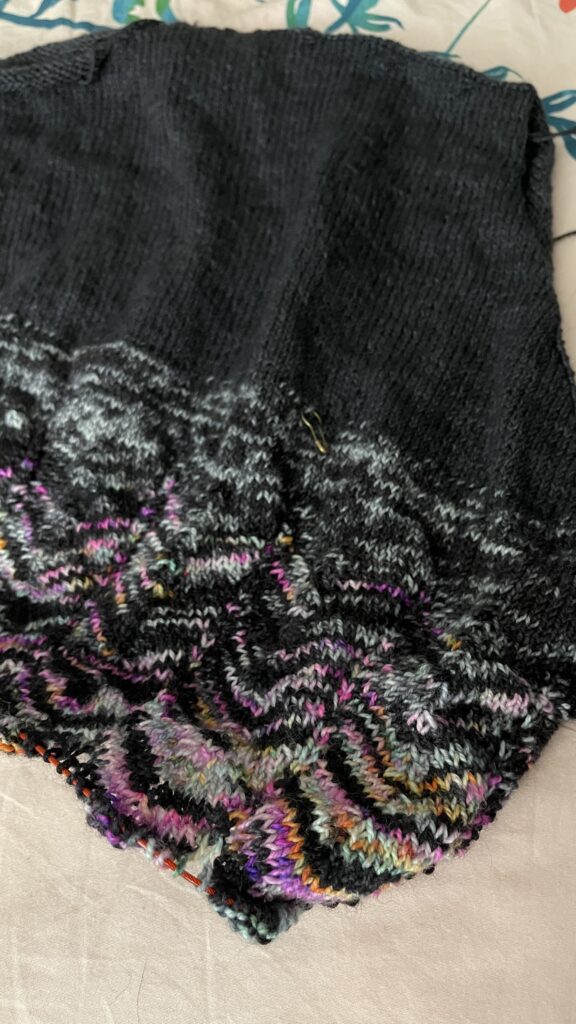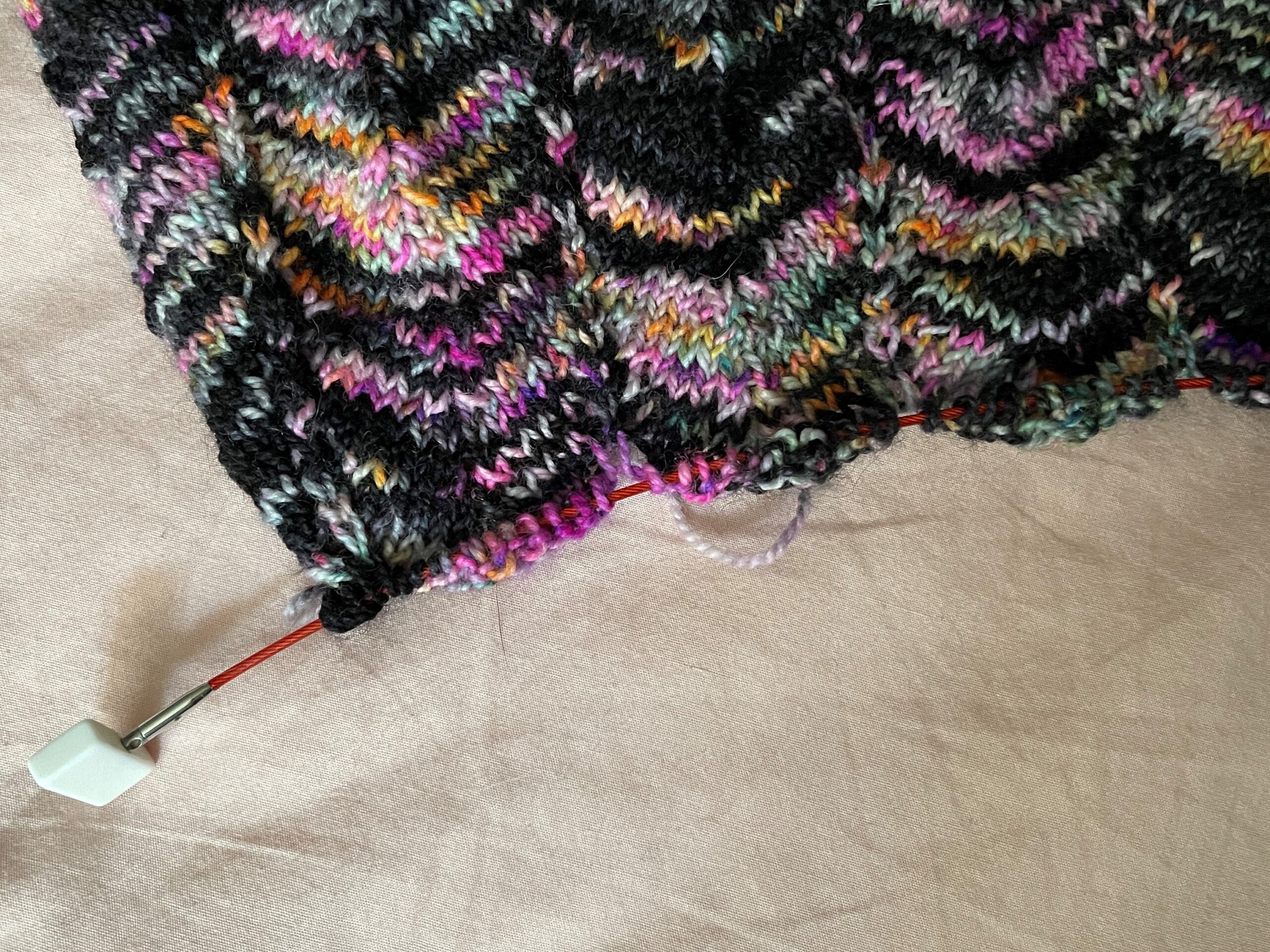This is my go-to method for a provisional cast on, in most instances. The beauty of this is that you don’t have to mess with waste yarn at all. At least not to start knitting. It’s genius.

The photo above shows how I have live stitches at the bottom of my Lapis Tee (by Yamagara) just hanging out on a spare interchangeable needle cable. At the top of the page you can see the ChiaoGoo needle stoppers, holding the stitches in place. Now that I’ve finished the body, I will just pop the needle tips on that cable and start knitting. I don’t have to thread a lifeline or worry about dropping stitches changing from waste yarn to a needle.
If you have worked a tubular cast on before, you’ve already won half the battle of this method. The other half of the battle isn’t that tricky either. Watch this video to learn more (it’s not fancy).
What is a Provisional Cast On?
A provisional cast on is just a cast on that you can take out later. Many people use a crochet chain to start. Another variation is to crochet directly onto the needle. You can also just cast on with waste yarn and work a row or two to make it easier to unpick later. I will usually do this when working a swatch sleeve.
Starting a knitting project with a provisional cast on offers up some freedom to do things that would be trickier with a standard cast on. In the case of the Lapis tee, a provisional cast on is used at first before the chevron pattern begins. Once the body is finished, the stitches are picked up and worked down to create the ribbing.
Could you start with the ribbing and work up? Sure. Using a provisional cast on, though, allows you to decide just how long you want the ribbing to be once the body is finished.
When Can I Use This Method?
You can cast on to a needle or needle cable any time a provisional cast on is called for in a pattern. You can also use this type of cast on with any project. Here’s a few reasons why provisional cast ons can be great for starting projects:
- Customize length. If you’re not sure how long you want something to be, this cast on method allows you to come back and add or subtract length easily.
- You want to get started but you can’t even think about working in rib right now. Just do it later.
- Join a piece in a circle once it’s finished. Great for cowls where the pattern is worked sideways!
- Work a pattern in different directions, such as with the Print O’ The Wave Stole.
Things to Remember about Provisional Cast Ons
Just a couple of quick notes about this type of cast on.
- If you’re using a waste yarn method, choose something that is slippery. Most grippy wools will not come out easily when you unpick them. A mercerized cotton can be your best friend when learning this technique.
- Similarly, pick a waste yarn that doesn’t have a lot of plies. More plies = more opportunities to split the yarn. This will be a beast to unpick later.
- This cast on is intended to avoid a hard edge, so don’t use it if you need a seam for stability. It’s not a great choice for shoulders in top down sweaters, in other words.
- Anytime you work in the opposite direction, you’re always a half stitch off. In one-color projects, this isn’t an issue. In colorwork patterns, it’s a big issue. You can still use this to work the edge on a colorwork project, however.
I hope you’ll give this technique a try in your next project that calls for a provisional cast on, and let me know what you think!


[…] begins from the bottom up, with a provisional cast on. You work an easy chevron pattern before fading into stockinette stitch for the yoke. The shoulders […]